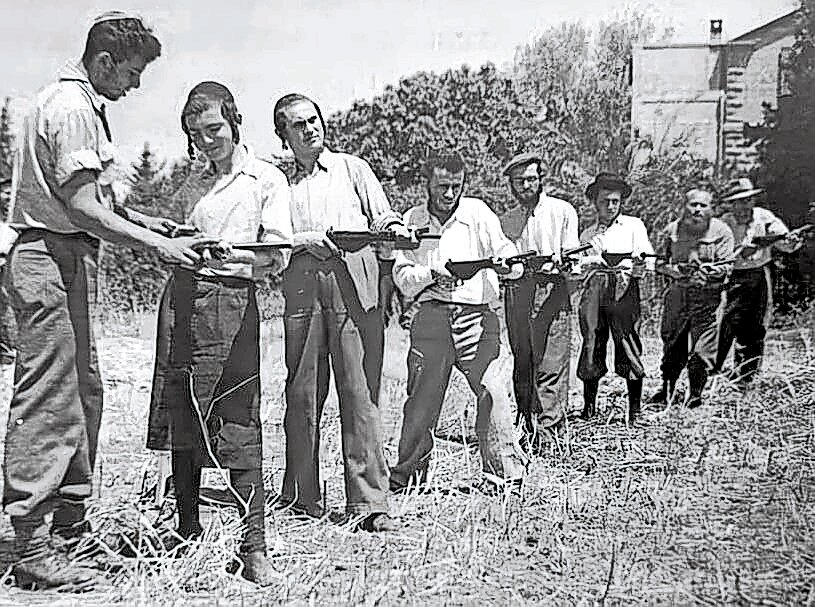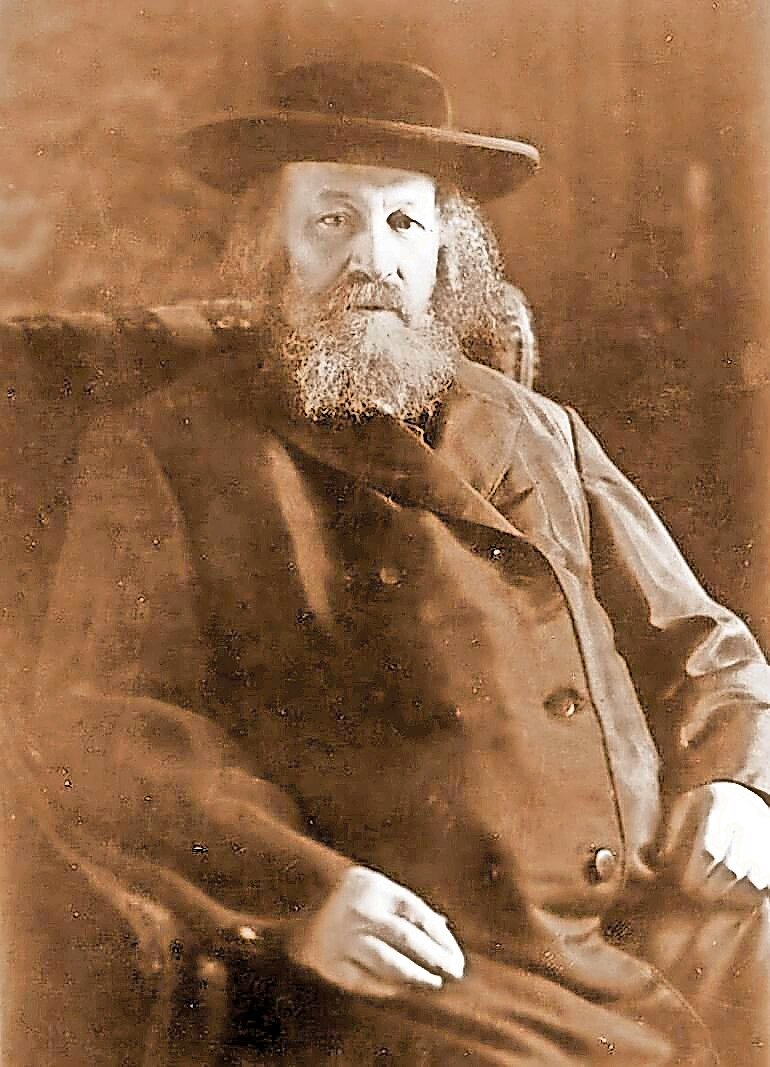Forgotten fighters: Ultra-Orthodox in ’48 war
The cries of ultra-Orthodox leaders echo through Israel’s political landscape. Protesters from Peleg Yerushalmi (Jerusalem faction) decry the potential conscription of haredi youth, even those not engaged in full-time religious study.
Yet just over seven decades ago, a markedly different reality prevailed, one that seems almost fantastical by contemporary standards.
This alternate history, brought to light by historian Moshe Ehrenvald, challenges not only the current ultra-Orthodox narrative but also common assumptions held by secular Israelis. It’s a history that has been largely erased from the collective memory of the haredi community.
Consider the case of Eliezer Hager (1924-2015), a name that would later become revered in ultra-Orthodox circles as the admor (spiritual leader) of the Seret-Vizhnitz Chassidic dynasty.
As a young man, Hager enlisted in the Haganah’s religious platoon in Haifa. He fought in the brutal battles at Kibbutz Ramat Yohanan during the War of Independence, sustaining a leg wound from enemy fire. Hager even participated in capturing the very hill in Haifa where he would later establish his Chassidic community.
This wasn’t a clandestine act of rebellion. Hager’s father, Rabbi Baruch Hager (1895-1963), himself the admor of the Seret-Vizhnitz Chassidic sect, attended a farewell ceremony for ultra-Orthodox recruits from Haifa, including his son.
The Hager family’s story is far from unique. Rabbi Zelig Heine, a grandson of the Gur rebbe, fought to defend Jerusalem. His long beard and sidelocks stood in stark contrast to his military role, a visual representation of worlds colliding.
These individual stories reflect broader institutional shifts. At the prestigious Hebron Yeshiva, students staged what amounted to a “rebellion,” defying their supervisor’s wishes as they sought to join the battle for Jerusalem’s defense.
• • •
The establishment of a yeshiva students battalion, known as “Gdud Tuvia,” in May-June 1948 marked a watershed moment. Dozens of ultra-Orthodox youths enlisted, including scions of the community’s most respected families.
Ehrenvald’s meticulously researched Hebrew-language book, “Haredim during the Independence War,” compiles hundreds of such accounts. Taken together, they paint a picture of a community undergoing a seismic shift. In less than a year, the ultra-Orthodox world moved from near-total rejection of Zionism and the struggle for statehood to active participation in the war effort.
While this integration did not transform the haredi leadership into ardent Zionists, it represented a profound, if temporary, change in their relationship with the emerging state.
Perhaps the most striking contrast between past and present emerges in Ehrenvald’s recent discovery of wartime writings by Rabbi Ben-Zion Meir Hai Uziel (1880-1953), Israel’s first Sephardi chief rabbi. Uziel’s stance stands in direct opposition to that of Sephardi Chief Rabbi, Yitzhak Yosef, whose term recently ended.
Where Yosef has declared that yeshiva students are categorically exempt from military service, Uziel’s wartime position was unequivocal.
“There is no doubt,” Uziel wrote, “that every man in Israel is obligated to enlist … both from the law of God’s war which is the inheritance of the land, and from the law of ‘Do not stand idly by your neighbor’s blood’.”
The chasm between the ultra-Orthodox community’s earlier wartime participation and the modern resistance to military service is stark. Ehrenvald attributes much of this shift to changes in leadership dynamics. He points to Rabbi Yosef Tzvi Dushinsky (1867-1948), a prominent ultra-Orthodox leader in 1948, whose “clear leadership” commanded widespread respect and faced little internal challenge.
Ehrenvald notes, “Today, the ultra-Orthodox public is enormous, and its political and religious leaders are divided and not necessarily coordinated.” This fragmentation, he argues, has led to a situation where “heads of streams and yeshivas care primarily for their own institutions” rather than providing unified guidance for the community as a whole.
• • •
Dushinsky led his community towards a little-known agreement on the partial conscription of yeshiva students. This landmark accord, signed in Jerusalem in May 1948, would later be replicated in Tel Aviv and Haifa. Signatories read like a who’s who of the ultra-Orthodox world; alongside Dushinsky were both of Israel’s chief rabbis and a pantheon of respected haredi leaders.
When asked to explain the stark difference between the earlier wartime ultra-Orthodox leadership and today’s, Ehrenvald points to the shadow cast by the Holocaust.
“The memory of the Holocaust, which some rabbis and their families experienced personally, deepened their awareness of existential danger,” he explains. “It also reinforced their understanding that a Jewish state would allow for the rebuilding of the world of Torah that had been destroyed.”
By contrast, Ehrenvald sees today’s ultra-Orthodox leadership engaging in “casuistry in a way that was never done before.” He cites troubling examples: Sephardi Chief Rabbi Yosef suggesting mass emigration in response to conscription.
The extent of ultra-Orthodox participation in 1947-48 is nothing short of remarkable. Hundreds of residents from Bnei Brak, now a bastion of ultra-Orthodox life, joined the ranks of the Haganah.
Most striking was participation of Gur Chassidim, members of one of the most insular Chassidic sects. A unit of Gur Chassidim fought alongside secular comrades in the Alexandroni Brigade.
The mobilization extended beyond the ultra-Orthodox heartland. Members of Poalei Agudat Israel living in frontier settlements answered the call to arms. Recruits from the religious Kibbutz Hafetz Haim bolstered the defenses of nearby Kibbutz Nitzanim, north of the Gaza Strip.
• • •
The transition wasn’t without its tensions. Ultra-Orthodox leaders engaged in negotiations with military authorities over issues of religious accommodation — kashrut, modesty standards and conditions that would allow their young men to serve without compromising their religious principles.
In January 1948, Poalei Agudat Israel leaders Binyamin Mintz and Rabbi Kalman Kahana met with David Ben-Gurion to demand a mechanism ensuring appropriate service conditions for their constituents. But they didn’t wait for full compliance before acting.
In early January, Agudath Israel’s central committee took the extraordinary step of declaring a religious obligation for men aged 17-25 to report for national service, and for those aged 26-46 to join civil defense units. The organization didn’t mince words, denouncing “any kind of evasion” in the strongest terms.
The justification for this mobilization was stark: “The hand of murderers threatens anyone who bears the name of Israel. Therefore, no man of Israel shall be exempt from defending life and property
The first wave of organized ultra-Orthodox recruitment unfolded with a fervor that’s hard to imagine nowadays. HaYoman, Agudath Israel’s Jerusalem bulletin, captured the moment in near-messianic terms: “Today, the first organized groups of hundreds of Jerusalem’s young men, faithful to God’s word, are going out to duty within special brigades.”
A vivid account published in Davar Yerushalayim in August 1948 crystallized this transformation. It described an ultra-Orthodox soldier manning a machine gun position on a Friday night, his religious garb a stark contrast to his military role.
• • •
The contrast with the current situation is indeed stark. Where now the prospect of arresting ultra-Orthodox draft evaders raises fears of riots, in 1948 such measures were met with widespread approval, even enthusiasm, within the haredi community.
Ehrenvald cites a public notice from Agudath Israel’s bulletin on March 8, 1948, a stern warning to those who had yet to report for duty: They must do so by March 11, or face “severe measures.”
Ehrenvald argues that rekindling this spirit of participation will require significant changes on both sides of the secular-religious divide. He points to recent controversies as examples of how trust has eroded
The historian advocates for a more accommodating approach.
“For a significant number of ultra-Orthodox recruits to join the IDF, we need to fundamentally change our approach,” he argues.
“This means creating separate units for them, with a different organizational culture, no female soldiers, and robust provisions for prayer, religious study and strict adherence to Jewish dietary laws. It’s not an insurmountable challenge.”










